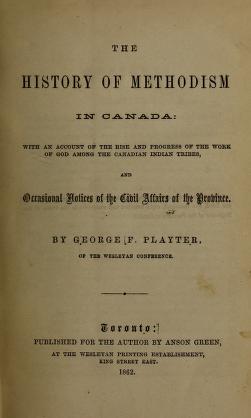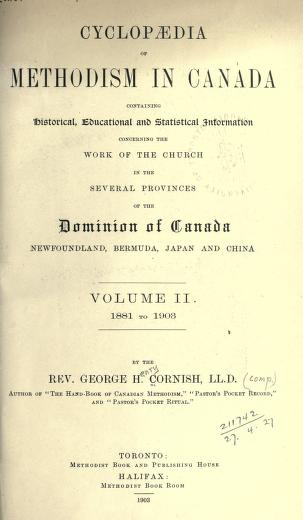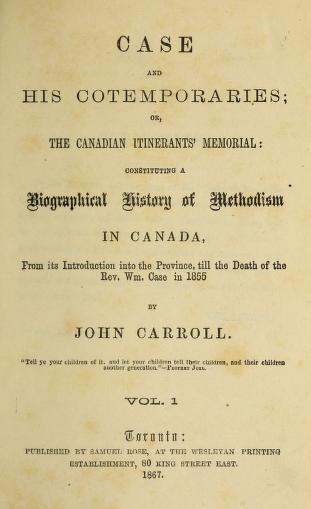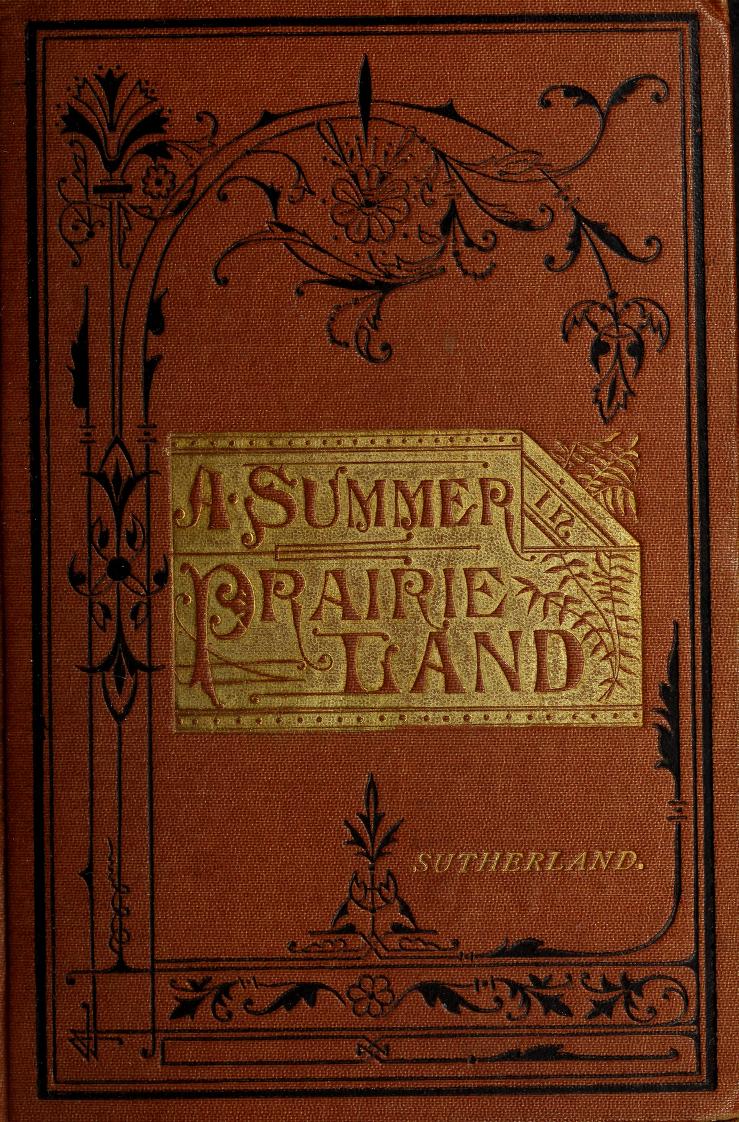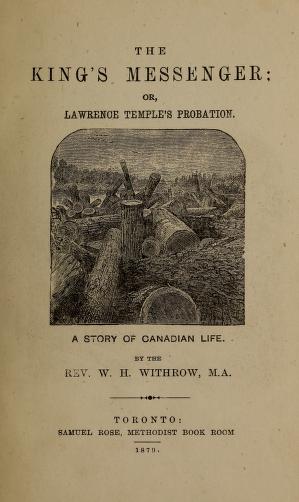During its first half century, publication of book-length works figured peripherally in the activities of the Toronto-based printing, publishing, and bookselling operation of Canadian Methodists. However, its first book, decidedly pertinent and practical, did appear quickly on the heels of its formation: The Doctrines and Discipline of the Methodist Church in Canada (1829), followed in 1834 by The Doctrines and Discipline of the Wesleyan Methodist Church in British North America. In the summer of 1836, at the behest of the church Conference, the Book Committee next began work on an official music book, Sacred Harmony. When a prospectus appeared in the Christian Guardian on 9 November, it detailed that half the cost would be payable on subscribing, with the remainder due on receipt. The prospectus also acknowledged that the church’s membership included individuals from England, Ireland, Scotland, and the United States, and made a commitment to producing a volume that would meet the needs and reflect the tastes of an ethnically mixed British North American congregation. The work appeared in 1838, though this first edition was printed in New York rather than Toronto.1 A comparable authorized volume aimed at Sunday school students – The Canadian Sunday School Harp: Hymns and Tunes for Sunday Schools and the Social Circle – would appear in 1866.
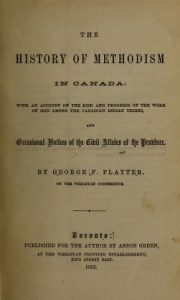
Development of a more broadly conceived “Methodist Canadian Literature” – that is, a body of works highlighting the contributions of Canadian Methodists and the history of Canadian Methodism – began to emerge at mid-century. The Reverend John Carroll (1809-1884) led the way in 1852 with The Stripling Preacher, or a Sketch of the Life and Character, with the Theological Remains of the Rev. Alexander S. Byrne. Carroll had been sending historical sketches about early Canadian Methodists to the Christian Guardian since 1837.2 According to its title page, The Stripling Preacher was “[w]ritten and compiled at the request of the [Methodist] Conference.”3 Its subject was a boy prodigy who died at eighteen. In the next eight years, there appeared missionary journals by the Reverends Peter Jacobs (1853), John Ryerson (1855), and Peter Jones (1860). In the case of Jones’s journal, the work itself makes it clear it was issued under the sponsorship of the church’s missionary committee rather than its printing and publishing arm.4 In 1862, George Playter (1809-1866) published his History of Methodism in Canada, initially at his own risk. However, he soon found himself in financial difficulties and appealed to the church’s Book Committee for aid, which it gave by authorizing the purchase of a “number of copies at 50 cents each, to the amount of half of Mr. Playter’s indebtedness.” Playter also wrote a second volume to his history: it was submitted to the Book Committee after his death in 1866, but never published.5
Despite the appearance of the aforementioned books between 1852 and 1862, one member of the Canadian Methodist constituency expressed discontent about the state of a Methodist Canadian Literature in the Christian Guardian in March 1865. “The question has often been asked,” stated George Case,
‘Why is it that the Wesleyans of Canada are so far behind their English and American brethren in the production of a Denominational Literature?’ I will not now attempt to explain the reasons of our deficiency in this respect; but whatever those reasons may be, it is an undeniable and humiliating fact that, beyond a few works of ephemeral character, we have produced almost nothing in the shape of a Canadian Wesleyan Literature. We have among us men of earnest spirit, great practical talent, and eminent scholarly attainments, and yet in the field of literary effort we have done very little indeed worthy of mention. Where are the works of systematic or didactic theology, religious biography, or scientific exposition, given to the Canadian public by minister or layman of our church?6
Financial concerns no doubt played a significant part in constraining the production of book-length works with a Canadian Methodist focus. Given the situation with Playter’s history, it is highly doubtful that the Toronto-based Methodist operation would have been willing to take on many of these books fully at its own financial risk. A minister’s salary, in turn, did not readily support the expenses associated with self-publication. Case also ignored the disproportionate sizes of the markets in England and the US in comparison to that of the Province of Canada: keep in mind, he wrote his comments in the Guardian prior to Confederation in 1867, and it would be 1874 before Methodists in Canada formed a church that stretched across the entirety of the new Dominion.
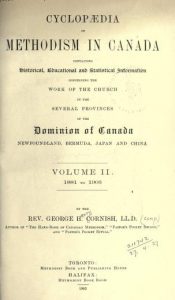
The Hand-Book of Canadian Methodism, compiled by George H. Cornish (1834-1912), further highlights the financial challenges of publishing specialized, book-length works for the colonial book market. Cornish’s book emerged from the press in 1867 only after its author had collected subscriptions for two years to offset the costs of its publication. After publication, difficulties arose because many of the ministers who had subscribed for the publication refused to pay for the volume. One potential reason for the refusal: the prospectus had advertised an 800-page work but the published Hand-Book was a mere 238 pages. Though measures were taken to counter the refusals, by 1873 stock still remained on hand, leading the Book Committee to resolve “to ask the Conference to request its members to purchase the Balance of stock from the Book Room.”7 Despite the difficulties associated with the Hand-Book, Cornish would go on to publish the much more substantial Cyclopaedia of Methodism in Canada, issued in two volumes. The first volume, a massive 850-page contribution that contained historical, educational, and statistical information about Canadian Methodism up to 1880, appeared in 1881. The second volume, just under half the length, appeared in 1903, and took up the story from 1881.
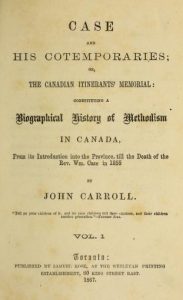
From the late 1860s onward, John Carroll became a powerhouse in expanding the canon of a Canadian Methodist Literature issued by his church’s Toronto printing, publishing, and bookselling operation. In 1867, under the imprint of Book Steward of the day Samuel Rose, he published the first instalment of his five-volume Case and His Cotemporaries; subsequent volumes appeared in 1869, 1871, 1874, and 1877. The “Case” of his title referred to William Case, one of Upper Canada’s pioneer Methodist preachers. John Webster Grant has described the work in its entirety as “a laborious five-volume compilation of facts about early Canadian Methodism that is not only indispensable to the historian but is also interesting to the general reader for the anecdotes of saddle-bag preachers scattered through it.”8 In the preface to the final volume, Carroll derides the lack of official endorsement his endeavour received, noting the work “has been conceived and carried on without one breath of endorsation, or encouragement, from any Conference or convocation in the world.” Nonetheless, the preface also indicates that it was financially supported by its publisher, for Carroll also states: “I am particularly anxious that my Publisher may be reimbursed within a reasonable time,” and added: “I have submitted to the personal disagreeable of canvassing for my own work, principally to prevent this loss to him.”9 After completing Case and His Cotemporaries, Carroll published further works of more modest proportions with his church’s publishing operation, including Father Corson, the Old Style Canadian Itinerant (1879), and My Boy Life, Presented in a Succession of True Stories (1882).
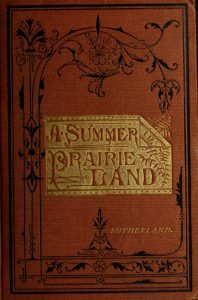
Carroll’s autobiography, My Boy Life, was preceded and succeeded by comparable works penned by other of his Canadian brethren. In 1868, also under the Rose imprint, there had appeared The Autobiography of the Rev. Charles Freshman. In 1877, there followed The Life and Times of the Rev. Anson Green, D.D. written by himself at the request of the Toronto Conference. The reflections of Anson Green (1801-1879) drew on his personal diaries. In 1881, Alexander Sutherland published his A Summer in Prairie-Land: Notes of a Tour through the North West Territory. Printed at the author’s own expense, the work included some revised material earlier published in the Christian Guardian, and included substantial discussion of Methodist missions in the North West.10 Egerton Ryerson’s historical contribution of 1882, Canadian Methodism: Its Epochs and Characteristics, was followed by his autobiography in 1883, just a year after his death. Entitled “The Story of My Life” by the late Rev. Egerton Ryerson, it was edited by J. George Hodgins and represented an early work issued under the imprint of Book Steward William Briggs. Four years later another memoir from a Methodist minister appeared: Joseph Henry Hilts (1819-1903) published Experiences of a Backwoods Preacher; or Facts and Incidents Culled from 30 years of Ministerial Life (1887). Notably, the title page of Hilts’s work makes explicit that it was “Printed for the author by William Briggs,” rather than published at the risk of the organization he oversaw.
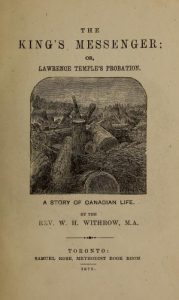
In tandem with all the editing and writing he did for the Canadian Methodist Magazine and the Sunday school papers, W.H. Withrow (1839-1908) produced book-length works that were issued by his church’s publishing arm. Some of these works were secular, others denominational. Certain of them had their origins in material he had written for the periodicals he edited. Withrow’s contributions to a “Canadian Methodist Literature” (as Case broadly defined it) included: Worthies of Early Methodism (1878); The King’s Messenger; or, Lawrence Temple’s probation: A Story of Canadian Life (1879); The Romance of Missions (1879); Neville Trueman, the Pioneer Preacher; A Tale of the War of 1812 (1880); Valeria, the Martyr of the Catacombs (1880); Life in a Parsonage; or, Lights and Shadows of the Itinerancy (1886); Barbara Heck: A Tale of Early Methodism (1895); and Makers of Methodism (1898).
The final decade of the nineteenth century was particularly notable for the series of works published by two Methodist missionaries of Canada’s North West: John McDougall (1842-1917) and Egerton Ryerson Young (1840-1901). McDougall’s initial work chronicled the missionary activities of his father: George Millward McDougall. The Pioneer, Patriot and Missionary (1888). Subsequent to that, he published books focussed on his own life and missionary activities, including: Forest, Lake and Prairie: Twenty Years of Frontier Life in Western Canada, 1842-62 (1895); Saddle, Sled and Snowshoe: Pioneering on the Saskatchewan in the Sixties (1896); and Pathfinding on Plain and Prairie: Stirring Scenes of Life in the Canadian North-West (1898). Correspondence between McDougall and Briggs dated 1910 suggests that at their initial time of publication, McDougall likely absorbed the risks of publication.11 Beginning in 1890, Egerton Ryerson Young (1840-1901), in turn, offered up his Methodist missionary experiences through such popular works as By Canoe and Dog-train among the Cree and Salteaux Indians (1890), Stories from Indian Wigwams and Northern Campfires (1893), and Oowikapun, How the Gospel Reached the Nelson River Indians (1895). Young’s works found international publishers very early on, so the Young titles issued by Briggs in Toronto may well have constituted “Canadian” editions.
The commitment demonstrated to the development of a Canadian Methodist literature from the mid-nineteenth century forward provided a significant foundation for the broader commitment to Canadian trade book publishing that would become integral to the cultural identity of The Ryerson Press in the twentieth century.
1 Janet B. Friskney, “Towards a Canadian “Cultural Mecca”: The Methodist Book and Publishing House’s Pursuit of Book Publishing and Commitment to Canadian Writing, 1829-1926,” MA thesis, Trent U, 1994, p. 83.
2 John Webster Grant, “Carroll, John Saltkill,” Dictionary of Canadian Biography, Volume 11. http://www.biographi.ca/en/bio/carroll_john_saltkill_11E.html. Accessed 10 August 2018.
3 John Carroll, The Stripling Preacher, or a Sketch of the Life and Character, with the Theological Remains of the Rev. Alexander S. Byrne (Toronto: Anson Green, at the Conference Office, 1852) title page.
4 Peter Jones, Life and Journals of Kah-ke-wa-quo-nā-by (Rev. Peter Jones), Wesleyan Missionary (Toronto: Anson Green, 1860) title page.
5 Quotation and other details provided in Friskney 85-86.
6 George Case, “Canadian Wesleyan Literature,” Christian Guardian 29 March 1865.
7 For discussion of Cornish’s Hand-book, and quotation from Book Committee minutes, see Friskney, 89.
8 Grant.
9 John Carroll, Case and His Cotemporaries, Volume 5 (Toronto: Methodist Book and Publishing House, 1877) iv, v.
10 Alexander Sutherland, A Summer in Prairie-land: Notes of a Tour through the North West Territory (Toronto: Methodist Book and Publishing House, 1881) v, vi.
11 William Briggs to John McDougall, 5 January 1910. Agreement #149, Box 8, Board of Publication Papers, United Church Archives. In his letter to McDougall, Briggs commits to taking over the copies, plates, and cover dies of “Pathfinding,” “Red River Rebellion,” “Forest, Lake and Prairie,” and “Saddle, Sled and Snowshoe.” (“Red River Rebellion” is a reference to McDougall’s later title In the Days of the Red River Rebellion: Life and Adventure in the Far West of Canada [1903].)





